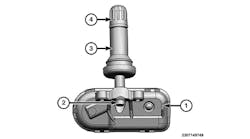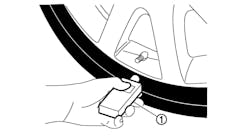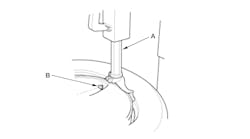(To see the charts for this article, click on the digital version of the May 2013 magazine, found toward the bottom of our homepage.)
Tire and service shop owners are busy folks. And, even if they had the time, our industry is not known for having dealers take the time to review their monthly financial statements on a regular basis. I believe this holds dealers back from achieving their true potential of “improving their bottom line profits.”
After looking at hundreds of monthly profit and loss statements, as well as gathering industry data from the financial community, here are some stats that should interest us.
The industry averages in the chart at left are for retail tire dealers who also do automotive service work as well. If you consider the industry is only at 2% net profit, that’s only $2,000 per month before taxes to pay for the following: bank loans, taxes, new equipment, new inventory, finance new accounts receivable, pay accounts payables, growth and bonuses at year’s end. I believe that this is not nearly enough money to pay for all of the above needs. Most tire dealers focus on their sales numbers and not their net profit, which is why they get into financial trouble.
Net and gross profits
In working with tire dealers for the last 30 years, my focus has always been on trying to help retail tire dealers achieve 10% net profit.
While working with more than 100 dealers in 2012, 12 of those dealers achieved more than 10% net profit – and two of the 12 achieved more than 20%. Another 55 of them achieved net profit of from 5% to 10%.
I believe the industry does such a poor job of making money because they don’t focus on this important number: net profit.
We think the best way for a dealer to improve his net profit is to focus on the stats in the chart at right and watch his gross profit and net profit increase.
By achieving an even mix between tires, labor and parts, this shop will have higher gross profits compared to a store which only sells tires.
We are not encouraging dealers to stop selling tires or even decrease tire sales! When a customer purchases tires, it is a strong indicator he will be keeping his vehicle for another few years, and the tendency is for that customer to be a good automotive service customer. If you do thorough courtesy inspections on their vehicles and present the needs to them after you’ve mounted their tires, then you have a great chance to sell them service and increase your service business.
Retail tire dealers must consider focusing more of their efforts on maintaining their tire business while increasing their service business.
[PAGEBREAK]
By being more diversified with your sales and not just focusing on selling tires, you will be able to increase your gross profit dollars and percentages. In the last two years, I have seen gross profit on tires dwindle by as much as 5% due to high competition and decline in demand, and I think it’s only going to get worse in the future.
To shore up the tire gross profit, many dealers:
1. find a brand that they don’t compete with locally;
2. negotiate a better price with their supplier or suppliers; or
3. put a strong training program in place to help move bargain buyers into middle or premium brands.
For every dollar of mechanical labor, a smart dealer will be showing an equal dollar in parts sales if he is doing a good job managing his sales mix. In the “other” category, we see road hazard, shop supplies, oil and lube and other miscellaneous profitable sales.
With all of the tire sales you are currently achieving, you have the vehicle on the lift and an opportunity to inspect the vehicle for additional needed items that have a high gross profit. Consider small items such as bulbs, wiper blades and filters (of all kinds), to name a few. Once you have the tire off the vehicle, you should inspect the brakes, front end parts, exhaust system and CV boots. If given the opportunity to inspect the engine area, you should look for worn-out belts, hoses, air filters and fluids that require flushing, etc.
Most importantly, look and ask for an alignment check. We recommend that you try to do one alignment for every four tires sold. Think of the gross profit generated in any of these areas. It’s not just about selling tires anymore.
Payroll
The next area to look at in order to improve your bottom line is the hardest to handle: payroll. Most business owners don’t spend nearly as much time in this area, and as a result, it proves to be the biggest drain on profits in the company.
Payroll should always be measured as a percent of gross profit, not sales. This category should include all employees who receive a paycheck, plus you should add the company’s portion of payroll taxes.
The industry average in this important ratio runs 55%, which is why we only make 2% net profit.
Company expenses
The final area to address in order to reach our goals is, of course, how to control company expenses. We recommend that tire dealers strive to adhere to the following monthly expense allocation for their rent, various advertising, insurance and other expenses.
If you are able to achieve all of the above percentages, then you will arrive at our goal for the industry:
Many dealers live from month to month hoping that their sales will be enough to pay for the current bills. However, if they have a bad month or two, they are in danger of filing bankruptcy. Maybe now is the time you roll up your sleeves and start looking for more than just tire sales.
Start to focus on improving your gross profit and, most importantly, be sure to review your payroll and reduce overtime pay, which will help in achieving our goal of 45%. ■
Norm Gaither is president of Dealer Strategic Planning Inc. (DSP), which oversees six 20 Groups made up of non-competing independent tire store owners in the U.S. and Canada. Its goal is to help them improve bottom line profits through idea sharing, financial benchmarking and best practices. DSP and Modern Tire Dealer formed a strategic alliance in 2010 to better serve the tire industry by sharing resources. For more information, see www.dsp-20group.com.
For more from the Twenty Group, see:
Is there a woodpecker in your business?




